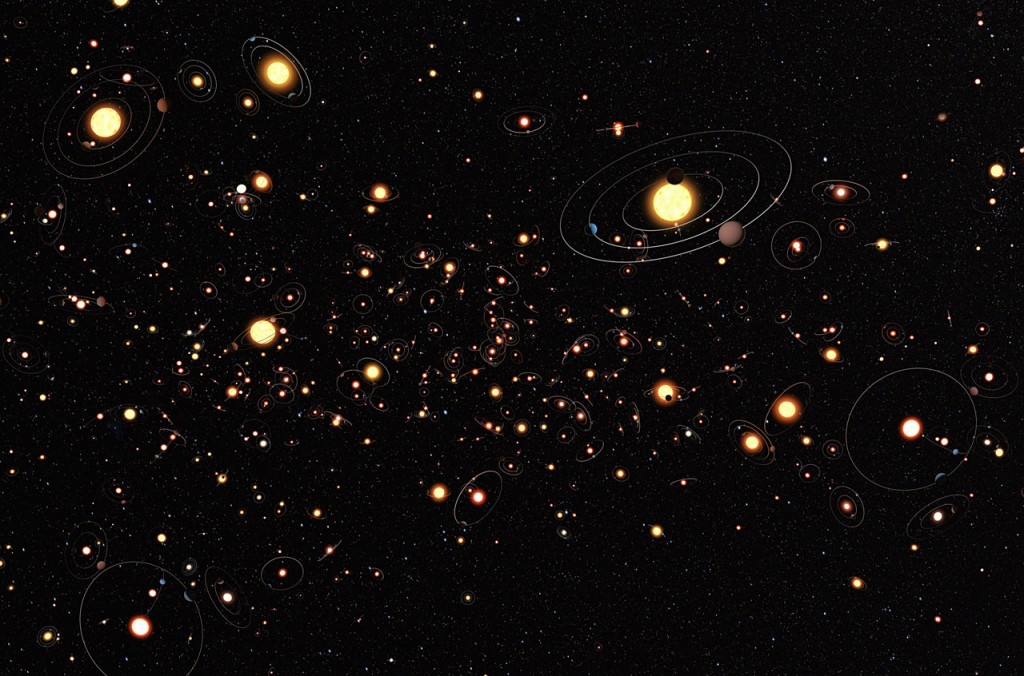A hunt for extrasolar planets has revealed that, on average, every star in the Milky Way has at least one companion planet.

New Zealand researchers have participated in the work, published in Nature, which found that stars in our galaxy have an average of 1.6 planets orbiting them. The study is the product of the Probing Lensing Anomalies NETwork (PLANET) collaboration, involving scientists from a dozen countries.
PLANET Scientists used a phenomena called gravitational microlensing to detect planets orbiting stars. Microlensing measures the bending of light that occurs as a star passes behind another object. Distortions in this light can indicate the presence of an planet.
The study led the PLANET researchers to conclude, “planets around stars in our Galaxy thus seem to be the rule rather than the exception.”
A video explaining the research, from the Danish Niels Bohr Institute, can be viewed here.
Last year microlensing was used by Kiwi researchers in the Microlensing Observations in Astrophysics (MOA) collaboration to detect unbound ‘orphan planets’ (you can read more, including an explanation of microlensing, here).
In the latest study PLANET researchers were able to estimate how many stars were orbited by a planet. University of Canterbury husband-and-wife astronomers Dr Michael Albrow and Dr Karen Pollard are founding members of the PLANET team and co-authors on the Nature study.
The Science Media Centre contacted Dr Albrow, Senior Lecturer in the Department of Physics and Astronomy, for further comment:
“Through a careful analysis of the sensitivity of our experiment we have uncovered the fraction of star-bound planets orbiting at a distance of 0.5 to 10 times the Sun-Earth distance. We have found that around 17 per cent of stars host Jupiter-mass planets, around 52 per cent accommodate Neptune-like planets, and ‘super-Earths’ are the most abundant, being associated with around 62 per cent of stars.”
“Karen and I were among the founder members of the project and were involved in planning the experiment and making observations using telescopes in Australia and South Africa. I was also heavily involved in processing the data – i.e. Writing and operating software to extract measurements from our digital sky images.”
The planets detected in the study were five times larger than Earth, or bigger. Is there a possibility of microlensing being used to detect smaller planets in the future?
“Yes – although it is much more difficult to detect low-mass planets than more-massive ones. Several new experiments are being planned including new telescopes dedicated to this work, and also WFIRST (an infrared space telescope).”
Will this revised estimate of planets per star have an impact on the probability of extraterrestrial life or inhabitable planets, i.e. more planets in the “Goldilocks” zone?
“Yes, this certainly suggests that habitable planets are to be found throughout the Galaxy.”
Are there plans to replicate this research with another sample of micro-lensing events?
“The current analysis was based on data from 2002-2007. We have continued observations since then and the new data will be used to further refine our knowledge of how planets of different mass are distributed around stars (what we call the planetary mass function).”
Quick facts:
PLANET Researchers looked for planets that:
- were orbiting stars at a distance of 0.5 to 10 astronomical units (one astronomical unit is the distance from the Earth to sun, about 150 million km),
- had a mass between five and 3180 times that of Earth.
Based on their findings, the researchers estimate that:
- 17% of stars accommodate ‘Jupiter’ mass planets (95-3180 x the mass of Earth)
- 52% have ‘Neptune-like’ planets (10-30 x the mass of Earth)
- 62% are orbited by ‘super-Earths’ (5-10 x the mass of Earth)